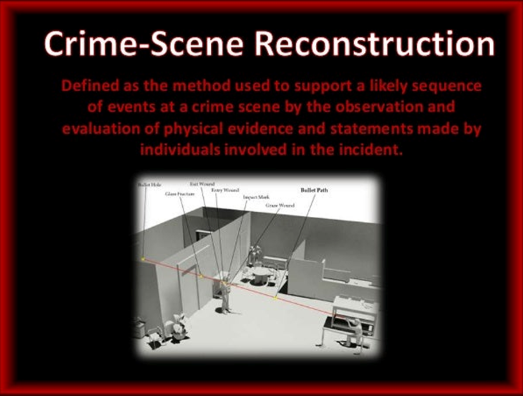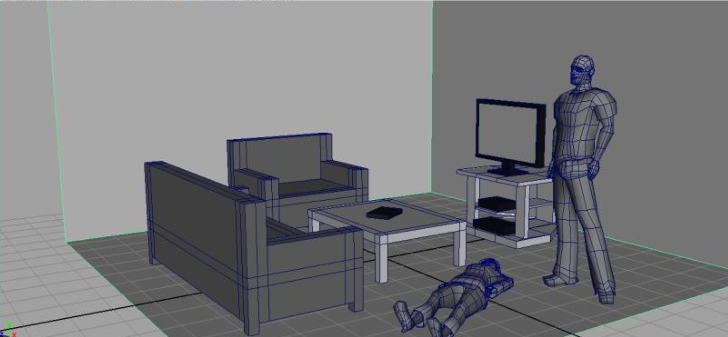Sir Arthur Conan Doyle’s fictional master detective, Sherlock Holmes, could enter a crime scene, look at the evidence, and crack a case with little assistance from others. This is fiction, though, so it’s not at all realistic. However, in actual life, law enforcement largely relies on forensic scientists’ skills to reconstruct the steps leading up to, during and following a crime. So what exactly is Crime Scene Reconstruction in forensics?
WHAT IS CRIME SCENE RECONSTRUCTION?

Reconstructing a crime scene for forensic purposes is the process of figuring out what happened before, during, and after a crime. Through the analysis of physical evidence, scene patterns, and scene analysis, crime scenes can be rebuilt. If local, state, or federal law enforcement organizations need help reconstructing a crime scene, the Connecticut Forensic Science Laboratory can help. Blood spatter interpretation, trajectory and shooting reconstruction, accident reconstruction, and sexual assault reconstruction are a few examples of the various reconstruction kinds.
In addition, Crime scene reconstruction is the process of solving a crime by identifying or ruling out the incidents and acts that took place at the spot by examining the surroundings and tangible evidence. Making a hypothesis as to how it happened is the first stage in this strategy. Deductive reasoning, which entails moving from general to specific in order to clarify and test theories, is the next phase.
WHO PARTICIPATES IN THE RECONSTRUCTION OF CRIME SCENES?
Keeping a crime scene operational is a challenging procedure that requires regular management of moving parts. Involved parties go far beyond the police and forensic scientists. Information gathered from witnesses, victims, and their relatives are crucial for crime scene reconstruction. But when reconstructing a crime scene, the victim or victims are always the starting point, and the process continues from there.
NOTABLE STEPS INVOLVED IN CRIME SCENE RECONSTRUCTION
There are basically five steps involved in crime scene reconstruction. These include;
- DATA GATHERING– This entails recording all information gleaned from the scene of the crime, the victims, and the witnesses. Conditions of the victim and evidence are included here. It also records blatant impressions and patterns. All of the data is arranged and reviewed for the investigation’s study.
- CONJECTURE – In its most basic sense, conjecture refers to speculation. Possible hypotheses regarding the course of the crime’s occurrences are provided before any in-depth evidence review. Not as truths, but as possibilities, these theories are utilized.
- FORMULATION OF HYPOTHESES: Using a body of data and physical evidence, an informed guess is made about the most likely explanation of an event.
- TESTING – After the hypothesis is formulated, more testing is carried out to support or refute it. This stage involves comparing the samples that were taken from the crime scene using a microscope and chemical testing and analysis.
- THEORY DEVELOPMENT – During the course of the inquiry, new details regarding the victim, suspect, actions of those responsible for the crime, the veracity of witness testimony, and other factors surrounding the events may be learned. In seeking to support the theory, all verifiable data and evidence must be taken into account. The hypothesis can be regarded as a plausible theory if it has been properly examined and proven.
CHOOSING THE BEST CRIME SCENE RECONSTRUCTION SOFTWARE
Cognitech AutoMeasure is the best photogrammetry software and crime scene reconstruction software to utilize for analyzing data from video or image evidence as a general Forensic Photogrammetry collection of software tools.
The advantage of using this software is that it can practically measure any dimension in the visible crime scene, including vehicle dimensions, biometric body dimensions other than height (such as shoulder width), scene lengths, angles, and areas, in addition to measuring the subjects’ height, which the competition can also do in some limited circumstances.



Leave feedback about this